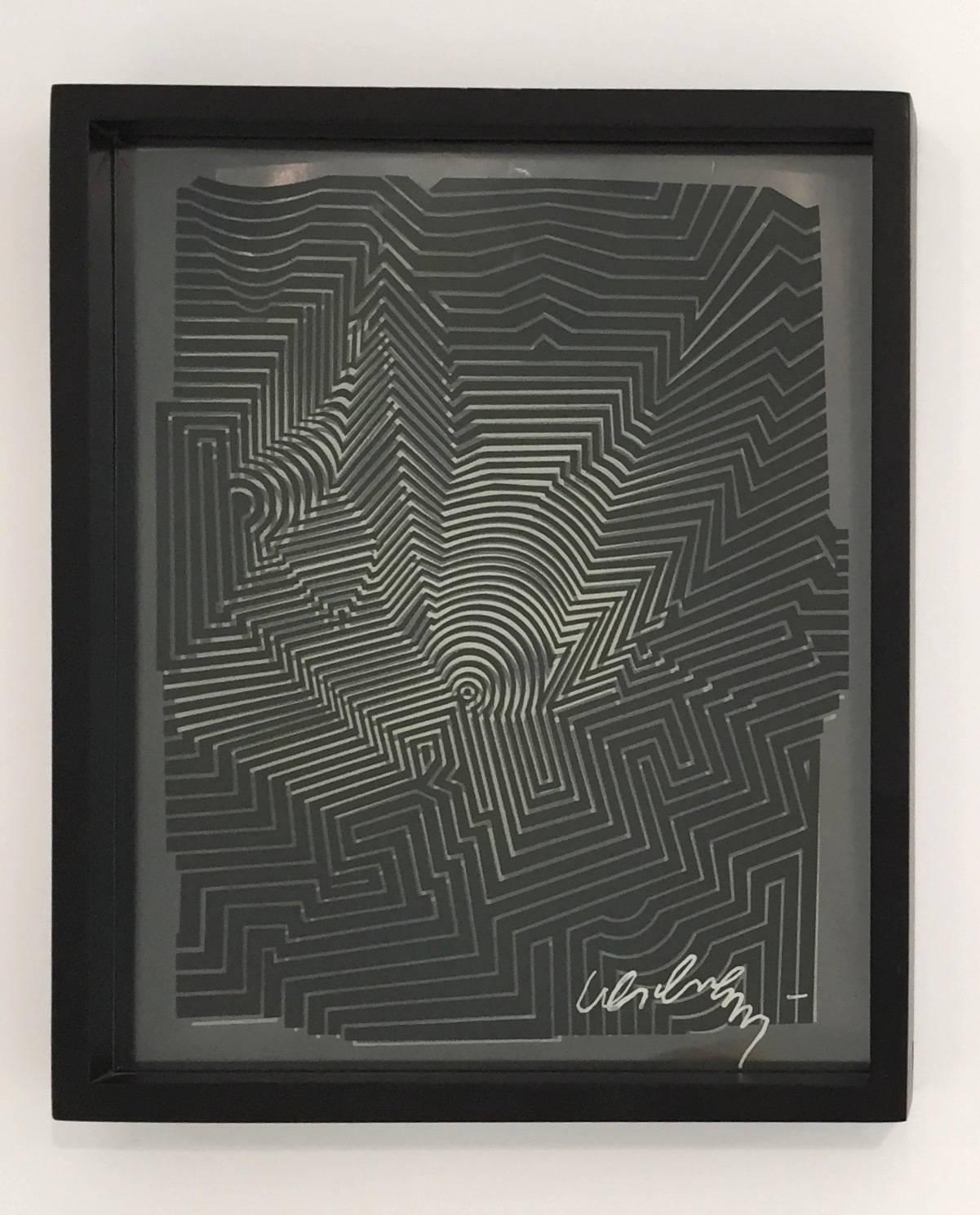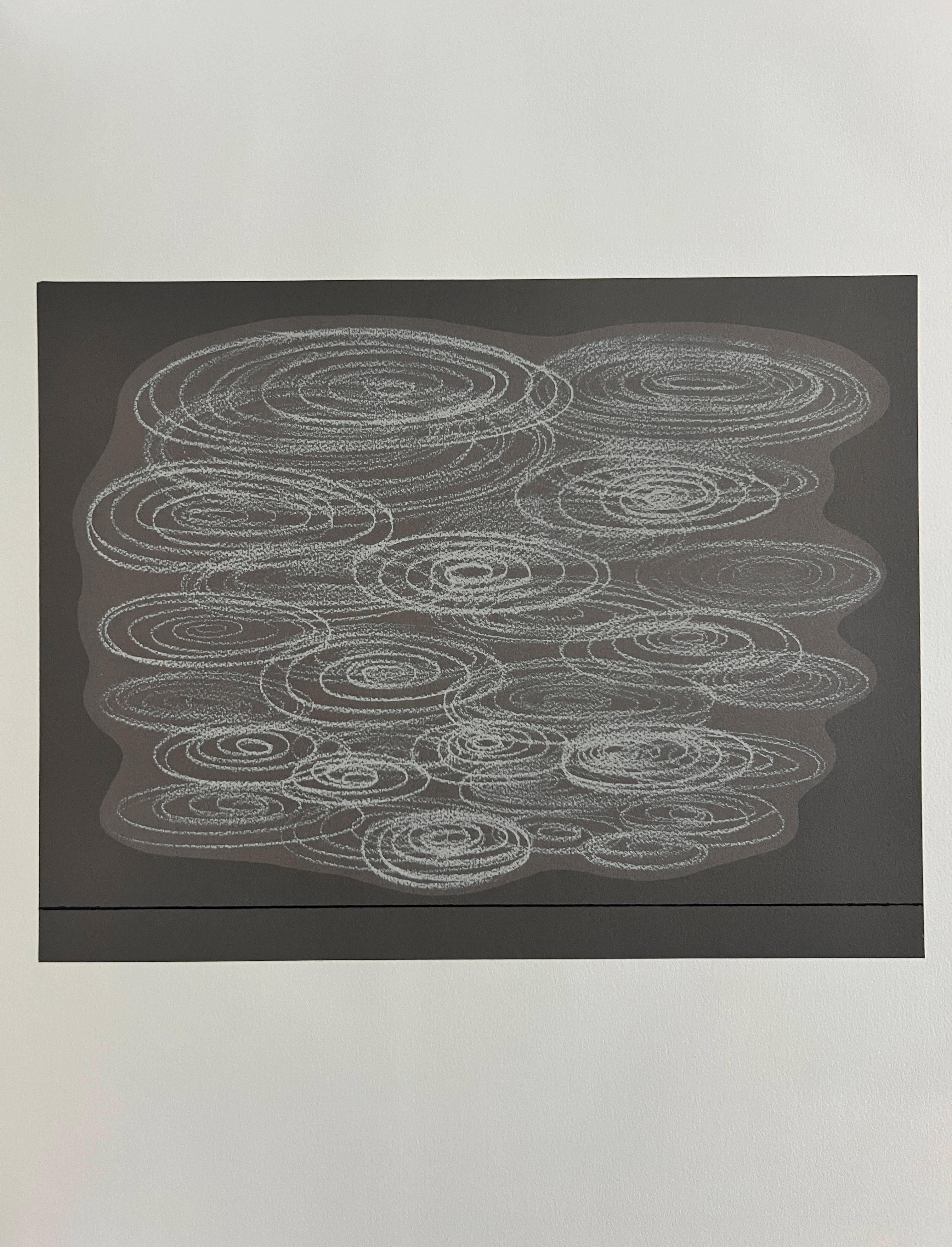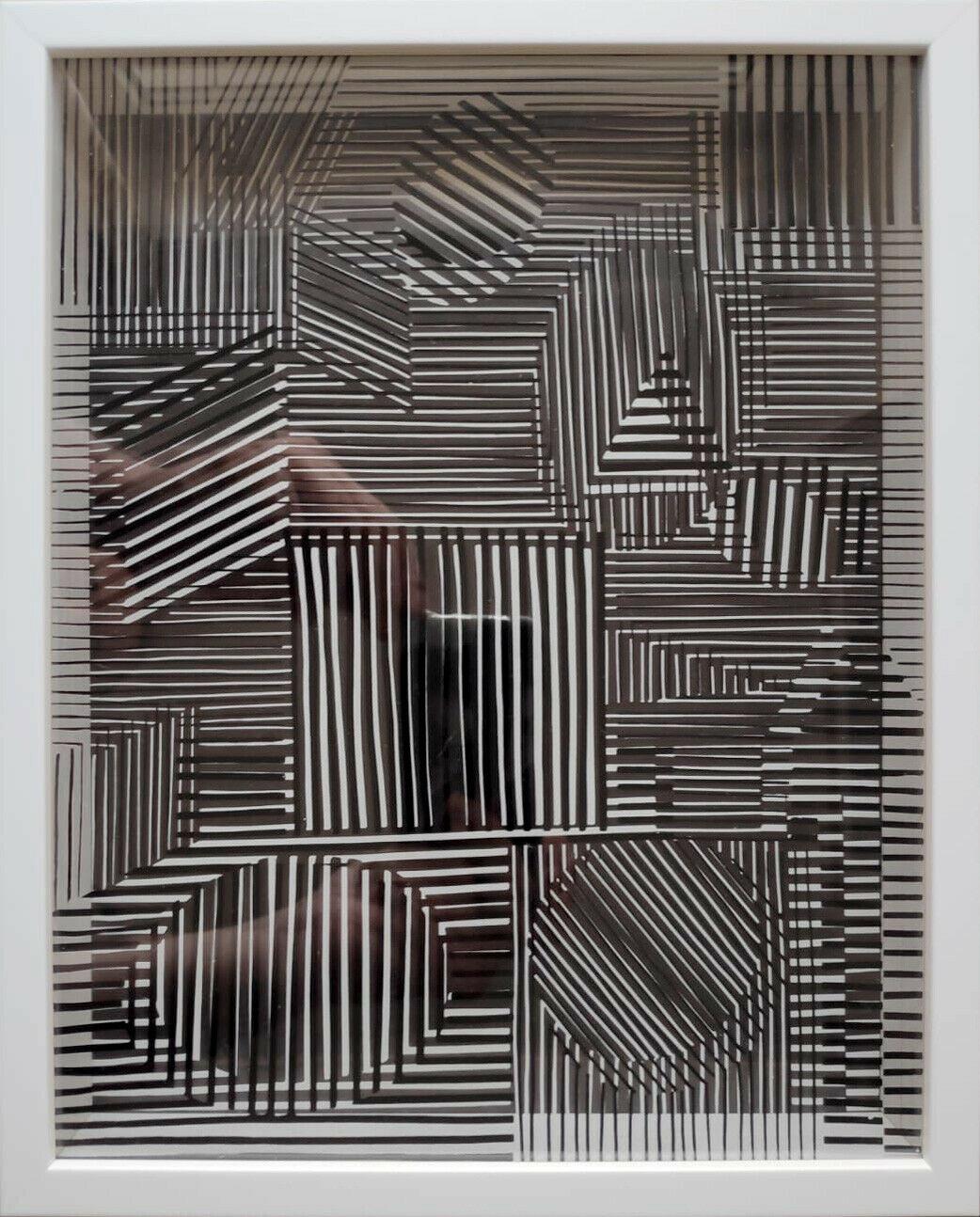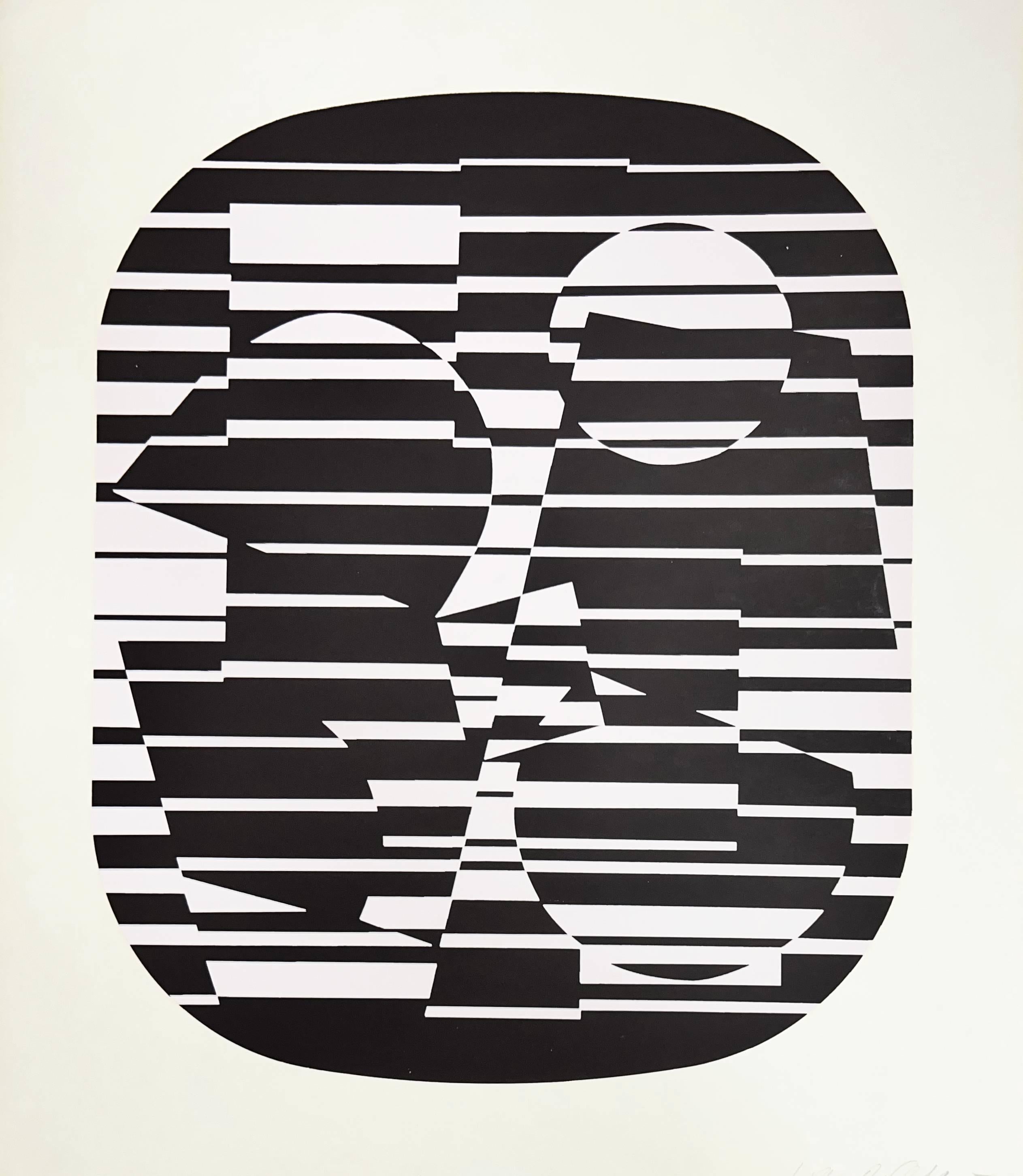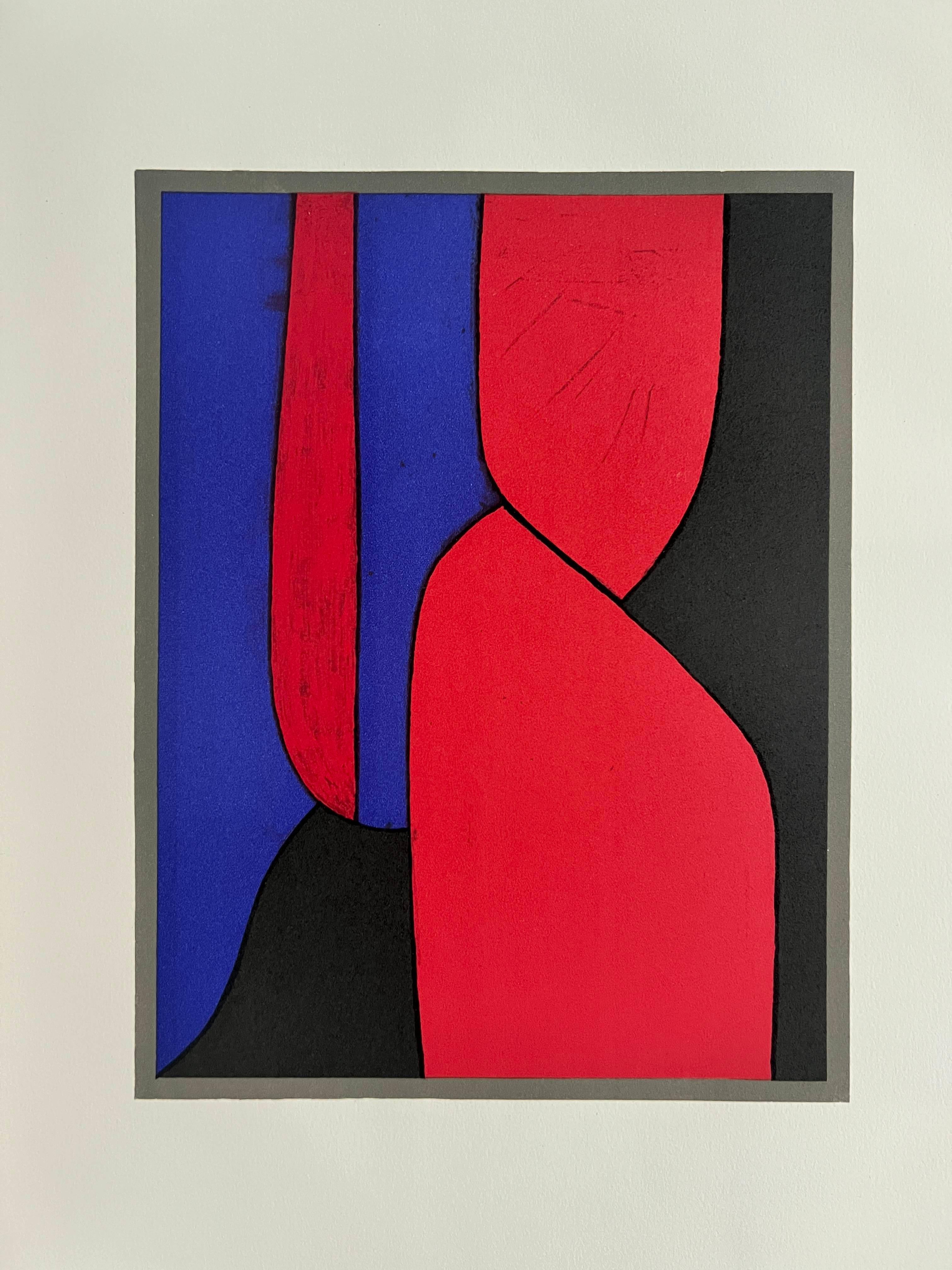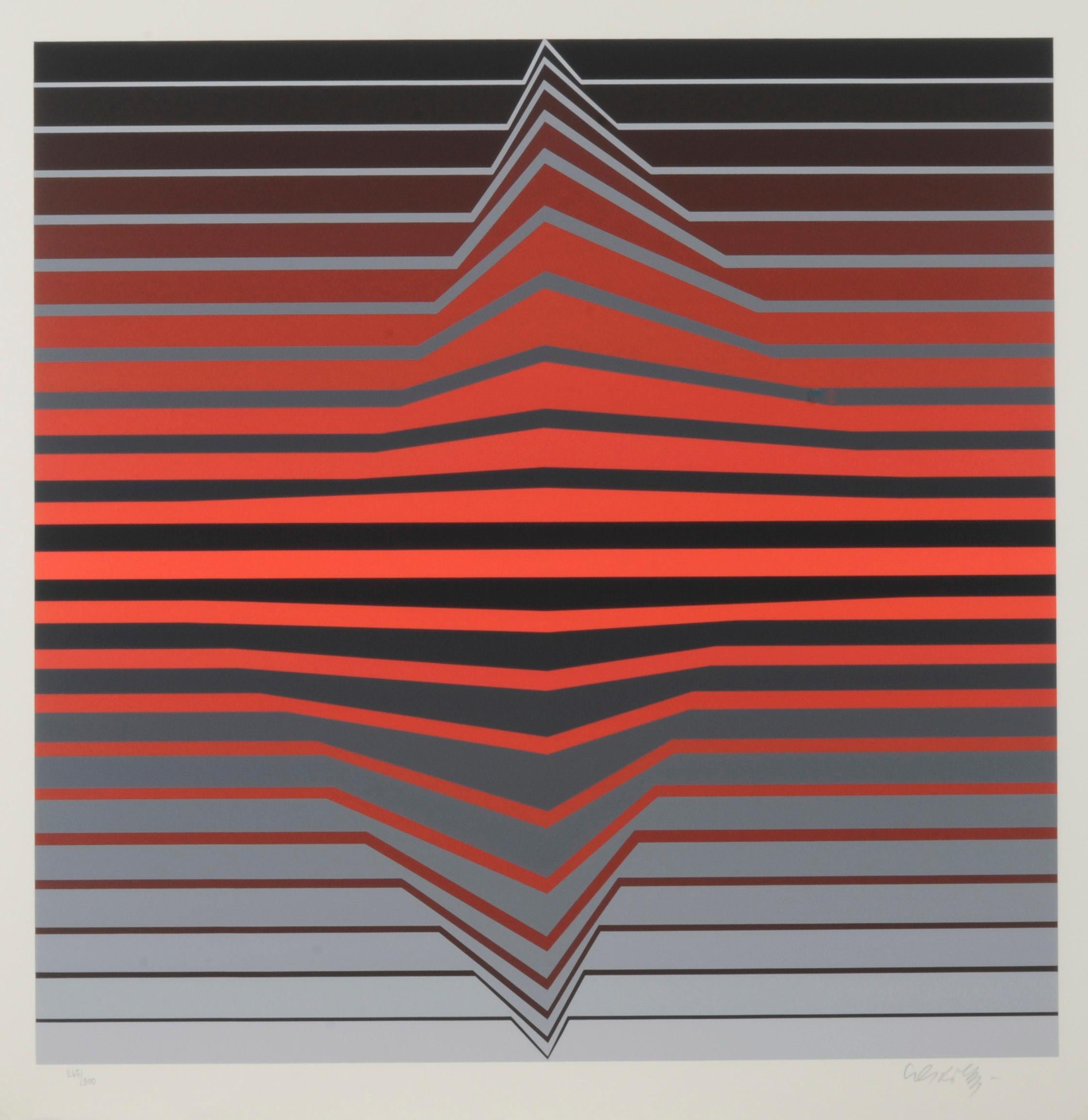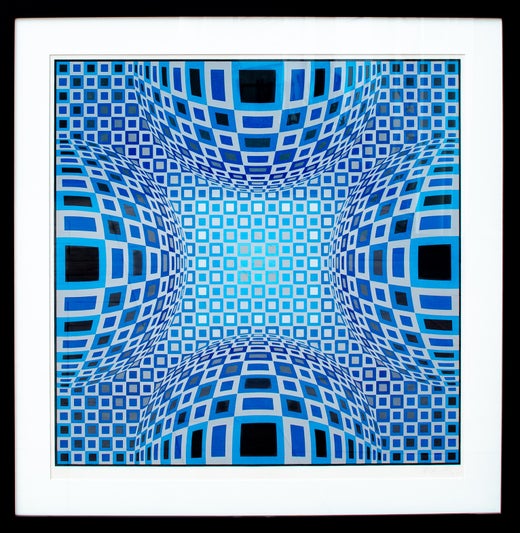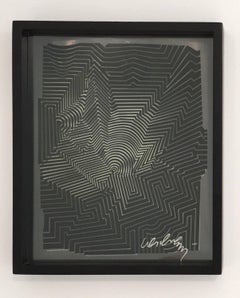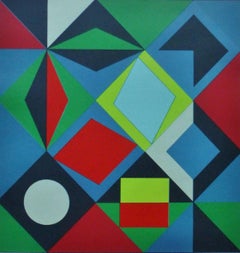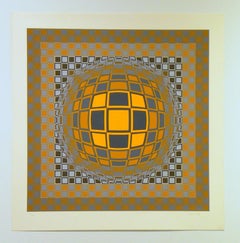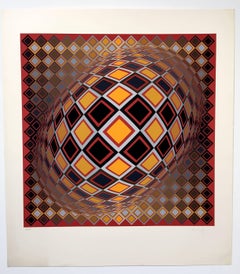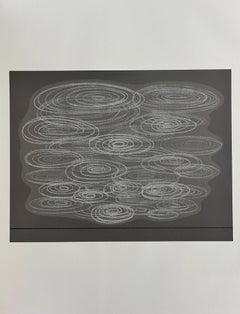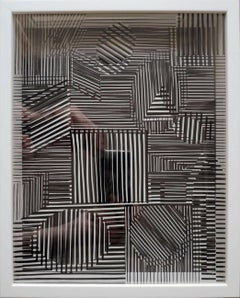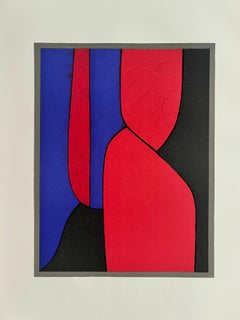Victor VasarelyCinetique1973
1973
About the Item
- Creator:Victor Vasarely (1906 - 1997, French, Hungarian)
- Creation Year:1973
- Dimensions:Height: 12.75 in (32.39 cm)Width: 10.5 in (26.67 cm)Depth: 1.25 in (3.18 cm)
- More Editions & Sizes:Roman Numeral Edition of L (50)Price: $4,500
- Medium:
- Movement & Style:
- Period:
- Condition:This work is in excellent condition.
- Gallery Location:Miami, FL
- Reference Number:1stDibs: LU53831572653
Victor Vasarely
Widely considered the grandfather of Op art, the French-Hungarian painter Victor Vasarely (1906–97) created eye-popping geometric abstractions that play with the viewer’s perception of depth, perspective and motion. A classic example is the 1937 Zebra, which consists of undulating black and white stripes that suggest the form of the titular animal through optical trickery. The work is often credited as the earliest Op art painting.
Such illusions were more than pleasing tricks for Vasarely, who insisted that “pure form and pure color can signify the world.” He wanted to “democratize” art by producing works in large editions at reasonable prices that were understandable across national and cultural boundaries. In the 1960s, he developed an alphabet plastique, or fine art alphabet, consisting of elementary visual building blocks that could be used in endless combinations to create original compositions. By employing this universal visual vocabulary and stripping away topical references, he sought to create what he called a “Planetary Folklore.”
Embodying Vasarely’s singular belief that art should serve a social function, accessible to all, these innovations may perhaps be his greatest contribution to 20th-century art.
Find a collection of Victor Vasarely prints, paintings, sculptures and other art on 1stDibs.
- ShippingRetrieving quote...Shipping from: Miami, FL
- Return Policy
More From This Seller
View All1970s Op Art Abstract Prints
Mixed Media
1960s Op Art Abstract Prints
Screen
1970s Op Art Prints and Multiples
Screen
1970s Op Art Abstract Prints
Screen
1980s Op Art Abstract Prints
Color
1970s Op Art Abstract Prints
Color
You May Also Like
1970s Op Art Prints and Multiples
Lithograph
1970s Mixed Media
Paper
1960s Op Art Prints and Multiples
Screen
1970s Op Art Prints and Multiples
Lithograph
1990s Op Art Abstract Prints
Screen
1980s Op Art Prints and Multiples
Screen
